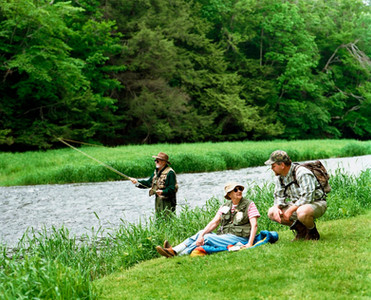How to Use the Rule of Odds in Photography for Balanced Compositions
- Feb 5
- 6 min read
Updated: Dec 10
Composition is one of the most critical aspects of photography, determining how elements are arranged within a frame to create an engaging and balanced image. One of the simplest yet most effective composition techniques is the Rule of Odds. In this guide, we’ll explore what the rule is, why it works, and how you can effectively apply it to your photography.
Rule of Odds in photography
Understanding the Rule of Odds in Photography
Rule of Odds simple definition
The Rule of Odds suggests that using an odd number of subjects, particularly three or five, creates a more engaging and visually harmonious composition. Odd groupings naturally draw viewers into the image, encouraging exploration and fostering a deeper connection.
Why does the Rule of Odds work?
The Rule of Odds is effective because it aligns with how our brains process visual information, making compositions more engaging and dynamic. Research in visual perception suggests that odd-numbered groupings naturally capture our attention, as our brains struggle to form symmetrical pairs or patterns.
The Rule of Odds is a composition technique that suggests images with an odd number of subjects appear more aesthetically pleasing and dynamic than those with an even number.
When an image contains an even number of subjects, our eyes tend to divide it into balanced halves, often resulting in a static or predictable composition. In contrast, an odd-numbered arrangement disrupts this symmetry, creating visual intrigue and encouraging active exploration. The unpaired element can also serve as a focal point, guiding the viewer’s eye and enhancing the overall impact of the image.
Practical Tips for Implementing the Rule of Odds
To make the most of the Rule of Odds, consider these strategies:
Select your elements wisely: Choose subjects that complement one another. For example, when photographing flowers, select three similar yet distinct varieties to create a cohesive and visually appealing composition.
Vary heights and distances: Add visual interest by positioning subjects at different heights or distances from the camera. For instance, three bottles of varying heights can help maintain the viewer’s attention and create depth.
Embrace negative space: Use negative space to allow your odd-numbered subjects to stand out. A spacious background can emphasize each element, enhancing the overall composition.
Experiment with angles and perspectives: Changing your angle can influence how the subjects interact. A low-angle shot of three friends walking together may better capture their connection than a standard straight-on shot.
Common Mistakes to Avoid
While the Rule of Odds can enhance your images, be mindful of these pitfalls:
Overcrowding: An odd number of subjects doesn’t mean cramming too many elements into the frame. Thoughtfully select your subjects, as an image with too many objects can feel cluttered and overwhelming.
Ignoring Balance: Even with an odd-numbered composition, aim for visual harmony. If three objects create tension, adjust their placement to maintain a well-balanced look.
Neglecting the Background: The background plays a crucial role in composition. Distracting elements can take attention away from your main subjects, so consider using a soft-focus background or eliminating distractions altogether.
How to Apply the Rule of Odds in Your Photography
Now that you understand why the Rule of Odds works, let’s explore how you can apply it in different photography scenarios.
Using the Rule of Odds in Still Life Photography
Still life photography, including food and product photography, benefits significantly from this composition technique.
Tips:
Arrange objects in groups of three or five rather than in pairs.
Position the focal point centrally while maintaining an odd-numbered composition.
Experiment with spacing and angles to achieve a balanced yet dynamic look.
Enhancing Portrait Photography with the Rule of Odds
When photographing people, incorporating three subjects can create a more balanced and visually appealing composition.
Tips:
Instead of having two people stand side by side, add a third person to break symmetry.
When photographing a couple, introduce an additional element (such as a pet or an object) to maintain an odd-numbered composition.
Position one subject slightly forward to add depth and avoid a flat composition.
Applying the Rule of Odds in Nature and Landscape Photography
Natural elements often adhere to the Rule of Odds, making it a powerful technique for landscape and wildlife photography.
Tips:
Capture three birds in flight rather than two to create a more dynamic composition.
Frame your shot around three prominent trees instead of a pair for a more balanced and engaging scene.
When photographing rocks, flowers, or mountains, incorporate an odd number of elements in the foreground to enhance visual interest.
Street and Architectural Photography with the Rule of Odds
Street and architectural photography can also benefit from applying the Rule of Odds.
Tips:
Capture three people walking in the frame instead of two for a more dynamic and engaging composition.
When photographing buildings, look for structures with three focal points, such as windows or arches, to create visual balance.
Use reflections and shadows to introduce an odd-numbered composition and add depth to your images.
Additional Composition Techniques to Combine with the Rule of Odds
To enhance your photography further, consider pairing the Rule of Odds with these composition techniques:
Rule of Thirds – Position odd-numbered elements along the grid lines for a well-balanced frame.
Leading Lines – Direct the viewer’s eye toward the odd-numbered subjects for a dynamic effect.
Framing – Use natural frames (e.g., windows or archways) to highlight odd-numbered elements.
Depth of Field – Apply a shallow depth of field to isolate odd-numbered subjects from the background.
By combining these techniques, you can create visually compelling images that stand out.
When to Break the Rule of Odds
While the Rule of Odds is a powerful composition technique, it’s not a rigid rule. In some cases, an even number of subjects may be more effective, particularly when aiming for symmetry, balance, or repetition in an image.
When even numbers work well:
Symmetrical Compositions – Two identical objects can create a strong sense of balance.
Minimalist Photography – A pair of objects can enhance simplicity and visual harmony.
Strong Leading Lines – Two parallel elements can emphasize direction and movement within the frame.
FAQ
Is the Rule of Odds always necessary in photography?
No, it’s a guideline rather than a rule. While it enhances most compositions, even-numbered subjects can work well in symmetrical or minimalist photography.
What is the best number to use in the Rule of Odds?
Three is the most commonly used number, but five and seven can also create compelling compositions. Larger numbers may be less effective in small-scale compositions.
Can I use the Rule of Odds in black and white photography?
Yes! The Rule of Odds remains effective in black and white photography, helping to create strong contrasts and balanced compositions.
How do I practice using the Rule of Odds?
Start by arranging small objects in groups of three at home and experiment with different angles. You can also apply this rule in street photography or portraits by framing subjects in odd-numbered groupings.
Does the Rule of Odds apply to abstract photography?
Yes, even in abstract photography, an odd number of elements can enhance visual interest and engagement.
Should I always have an odd number of people in group portraits?
Not necessarily, but odd-numbered groups tend to create more dynamic compositions. If you have an even number of people, experiment with positioning to add depth and movement.
The Rule of Odds is a simple yet powerful composition technique that enhances the balance, engagement, and visual appeal of your images. Whether you're capturing portraits, landscapes, still life, or street scenes, incorporating an odd number of subjects can make a significant difference in the impact of your photos.
For beginners and intermediate photographers, practicing this rule will improve compositional skills and elevate overall photography. However, remember that creativity often comes from breaking the rules—so experiment, explore, and develop your unique style!
Would you like to learn more about photography composition techniques? Check out this comprehensive guide on composition in photography to take your skills to the next level!






























































